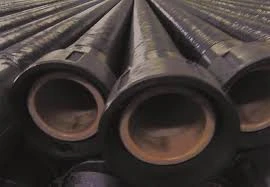
-
 Afrikaans
Afrikaans -
 Albanian
Albanian -
 Amharic
Amharic -
 Arabic
Arabic -
 Armenian
Armenian -
 Azerbaijani
Azerbaijani -
 Basque
Basque -
 Belarusian
Belarusian -
 Bengali
Bengali -
 Bosnian
Bosnian -
 Bulgarian
Bulgarian -
 Catalan
Catalan -
 Cebuano
Cebuano -
 China
China -
 China (Taiwan)
China (Taiwan) -
 Corsican
Corsican -
 Croatian
Croatian -
 Czech
Czech -
 Danish
Danish -
 Dutch
Dutch -
 English
English -
 Esperanto
Esperanto -
 Estonian
Estonian -
 Finnish
Finnish -
 French
French -
 Frisian
Frisian -
 Galician
Galician -
 Georgian
Georgian -
 German
German -
 Greek
Greek -
 Gujarati
Gujarati -
 Haitian Creole
Haitian Creole -
 hausa
hausa -
 hawaiian
hawaiian -
 Hebrew
Hebrew -
 Hindi
Hindi -
 Miao
Miao -
 Hungarian
Hungarian -
 Icelandic
Icelandic -
 igbo
igbo -
 Indonesian
Indonesian -
 irish
irish -
 Italian
Italian -
 Japanese
Japanese -
 Javanese
Javanese -
 Kannada
Kannada -
 kazakh
kazakh -
 Khmer
Khmer -
 Rwandese
Rwandese -
 Korean
Korean -
 Kurdish
Kurdish -
 Kyrgyz
Kyrgyz -
 Lao
Lao -
 Latin
Latin -
 Latvian
Latvian -
 Lithuanian
Lithuanian -
 Luxembourgish
Luxembourgish -
 Macedonian
Macedonian -
 Malgashi
Malgashi -
 Malay
Malay -
 Malayalam
Malayalam -
 Maltese
Maltese -
 Maori
Maori -
 Marathi
Marathi -
 Mongolian
Mongolian -
 Myanmar
Myanmar -
 Nepali
Nepali -
 Norwegian
Norwegian -
 Norwegian
Norwegian -
 Occitan
Occitan -
 Pashto
Pashto -
 Persian
Persian -
 Polish
Polish -
 Portuguese
Portuguese -
 Punjabi
Punjabi -
 Romanian
Romanian -
 Russian
Russian -
 Samoan
Samoan -
 Scottish Gaelic
Scottish Gaelic -
 Serbian
Serbian -
 Sesotho
Sesotho -
 Shona
Shona -
 Sindhi
Sindhi -
 Sinhala
Sinhala -
 Slovak
Slovak -
 Slovenian
Slovenian -
 Somali
Somali -
 Spanish
Spanish -
 Sundanese
Sundanese -
 Swahili
Swahili -
 Swedish
Swedish -
 Tagalog
Tagalog -
 Tajik
Tajik -
 Tamil
Tamil -
 Tatar
Tatar -
 Telugu
Telugu -
 Thai
Thai -
 Turkish
Turkish -
 Turkmen
Turkmen -
 Ukrainian
Ukrainian -
 Urdu
Urdu -
 Uighur
Uighur -
 Uzbek
Uzbek -
 Vietnamese
Vietnamese -
 Welsh
Welsh -
 Bantu
Bantu -
 Yiddish
Yiddish -
 Yoruba
Yoruba -
 Zulu
Zulu
fiberglass stack liner
Fiberglass Stack Liner Enhancing Industrial Efficiency and Environmental Compliance
In today’s industrial landscape, the need for robust and efficient solutions for emissions control has never been more pressing. One such solution gaining traction is the fiberglass stack liner, a technology that aims to improve stack performance while ensuring compliance with environmental regulations. This article delves into the importance, benefits, and applications of fiberglass stack liners in various industries.
Understanding Fiberglass Stack Liners
A fiberglass stack liner is a specialized lining material made from fiberglass-reinforced plastic (FRP). Designed to be placed inside smokestacks and exhaust stacks, these liners offer a protective barrier against corrosive flue gases produced during combustion processes. The primary purpose of these liners is to mitigate corrosion, extend the lifecycle of the stack, and reduce maintenance costs associated with repairs and replacements.
The Importance of Corrosion Resistance
Industrial stacks are constantly exposed to harsh conditions, with temperatures often exceeding 2000°F and flue gases that can contain sulfuric acid, hydrochloric acid, and other corrosive substances. Traditional construction materials like metal and concrete can deteriorate rapidly under such hostile environments. Fiberglass stack liners, however, are engineered to withstand high temperatures and resist chemical degradation, making them a superior choice for industries such as power generation, petrochemical, and manufacturing.
Benefits of Fiberglass Stack Liners
1. Extended Lifespan By preventing corrosion and reducing the wear and tear on the stack itself, fiberglass liners significantly extend the operational life of exhaust systems. This longevity translates to lower replacement costs and improved ROI for companies.
2. Reduced Downtime The installation of fiberglass stack liners can often be done without shutting down operations, minimizing downtime. This is a critical advantage for industries where continuous operation is vital for profitability.
3. Improved Emissions Control With the stringent regulations surrounding air quality, industries are under pressure to minimize their emissions. Fiberglass stack liners play a crucial role in maintaining cleaner exhaust streams, ensuring compliance with environmental standards and reducing the risk of penalties.
fiberglass stack liner

4. Lightweight and Versatile The lightweight nature of fiberglass allows for easier installation and handling compared to heavier materials. Additionally, fiberglass can be molded into various shapes and sizes, offering flexibility for different stack configurations.
5. Lower Energy Consumption The insulating properties of fiberglass help maintain optimal temperatures within the stack, which can lead to improved thermal efficiency. This reduction in energy consumption contributes to a company’s sustainability efforts and operational cost savings.
Applications in Various Industries
Fiberglass stack liners find applications across a wide range of industries
- Power Generation In coal-fired power plants, the need for effective emissions control is paramount. Fiberglass liners help manage the harsh conditions associated with coal combustion while minimizing the environmental impact.
- Oil and Gas The petrochemical industry faces significant challenges with corrosive gases and chemicals. Fiberglass stack liners offer protection against these harsh environments, thus ensuring reliability and compliance.
- Cement Manufacturing Cement production involves high emissions and aggressive environments. The use of fiberglass liners in kiln stacks improves durability and reduces maintenance needs.
- Waste-to-Energy Facilities These facilities must handle corrosive byproducts efficiently. Fiberglass stack liners help in managing these emissions effectively while supporting the sustainability goals of waste reduction.
Conclusion
Fiberglass stack liners represent a significant advancement in the realm of industrial emissions control, offering a host of benefits that contribute to both operational efficiency and environmental compliance. As industries continue to face challenges related to emissions regulations and the need for cost-effective solutions, the adoption of fiberglass stack liners is likely to expand. By providing a durable, versatile, and lightweight solution, fiberglass stack liners not only enhance the performance of exhaust systems but also support industries in their journey toward sustainability and operational excellence. As we move forward, investing in such technologies will be critical for a cleaner and more efficient industrial future.









